With social media being as big as it is, there’s a common misconception that it has replaced blogs. However, that’s far from true.
Blogs are still up and thriving, especially in the tech and lifestyle industries. In fact, blogging has become a full-time career for many individuals, with some even making six-figure incomes from their blogs.
If you’re planning to start a blog or take your existing one to the next level, here are some blogging statistics to keep in mind for 2025.

General Blogging Stats
Before going into details about specific aspects of blogging, let’s take a look at some general blogging stats. In the past few years, the way blogs are written has changed a lot.
Now, blogs are very visual-rich, with videos and images making up a significant part of the content. Blog posts also tend to be longer now. With AI in the picture, the process of blog post creation has also become more streamlined, saving bloggers a lot of time.
Here are some general blogging stats to give you an idea of this evolving field.
- There are 31.7 million bloggers in the US, a significant increase from 27.4 million in 2014.
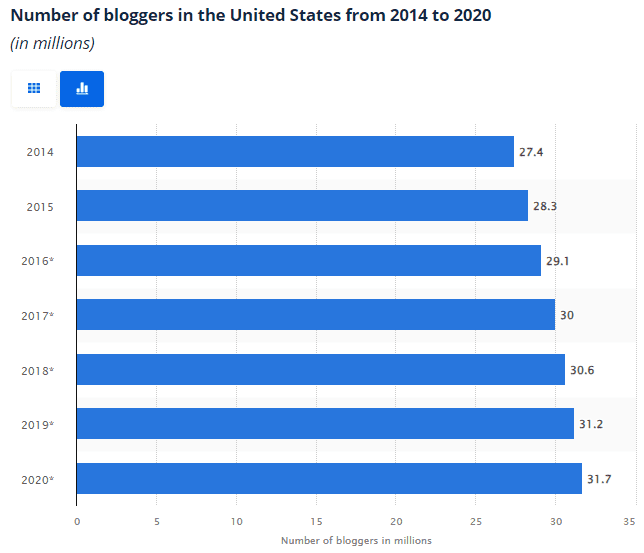
Source
2. 80% of bloggers are driving results even now, while 18% say they either get disappointing results from their blogs or don’t know if their blogs deliver value.
3. According to 71% of marketers, content marketing is more important for their organization today than it was in the past.
4. Out of the 1.9 billion websites in the world, 600 million are blogs, indicating that blogs are still a significant part of the internet. Collectively, these blogs produce more than 6 million posts daily, which translates to over 2.5 billion blog posts every year.
5. WordPress users produce about 70 million new posts every month. These posts get 77 million comments on a monthly basis.
6. Blogger.com got 37.6 million unique global visitors in December 2023. Throughout the year, the number of global visitors to Blogger.com stayed between 36.6 million and 41.1 million.
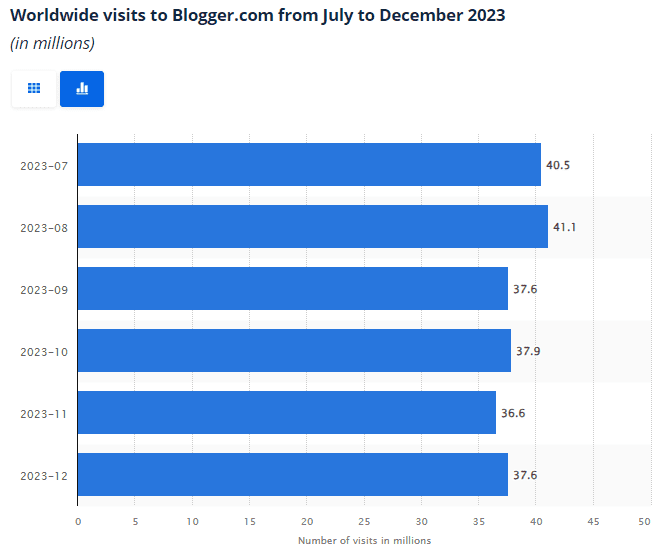
Source
Blogging Revenue Stats
There are plenty of revenue streams for bloggers, including affiliate marketing, sponsored posts, advertisements, and selling products or services. Here are some blogging stats related to revenue.
7. Google AdSense is the most popular monetization method for bloggers, and it is followed by affiliate marketing. However, the trend is different for high-income bloggers, as they are 2.5x more likely to sell their own merchandise or service than monetize through Google AdSense. For these bloggers, Google AdSense is the third most popular revenue source.
8. 72% of bloggers that make $2,000+ per month use Adthrive or Mediavine as their dedicated ad management agency.
9. For the bloggers that make between $7,500 and $25,000 per month, 42.2% of their income comes from affiliates while 33.3% comes from ads.
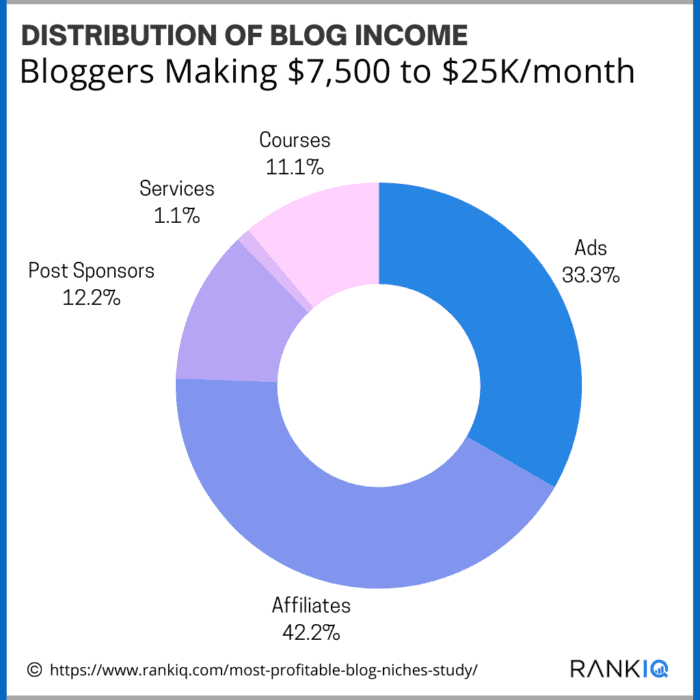
Source
10. 42.8% of food blogs get over 50,000 sessions a month, followed by 13.3% of lifestyle blogs and 10% of travel blogs.
11. The top four high-traffic niches account for 74% of all traffic going to blogs. These niches include food, lifestyle, travel, and arts/crafts.
12. The food blog niche is the most profitable, with a median monthly income of $9,169. The second most profitable niche is personal finance, with bloggers making $9,100 in monthly income. Lifestyle and mommy bloggers have a median income of $5,174, followed by travel niches making $5,000 per month.
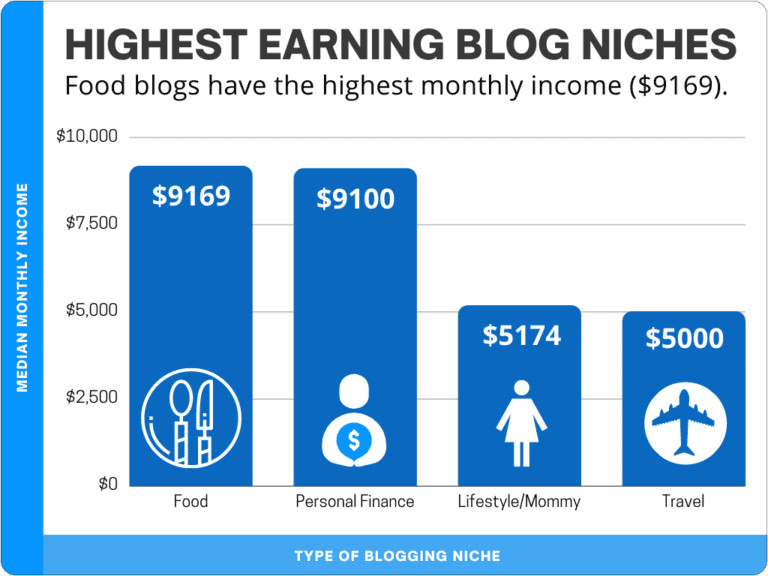
Source
13. The organic search trend for personal-finance-related keywords stays consistently high throughout the year, which makes sense considering that it covers evergreen topics. That’s most likely why the median income for personal finance blogs is high.
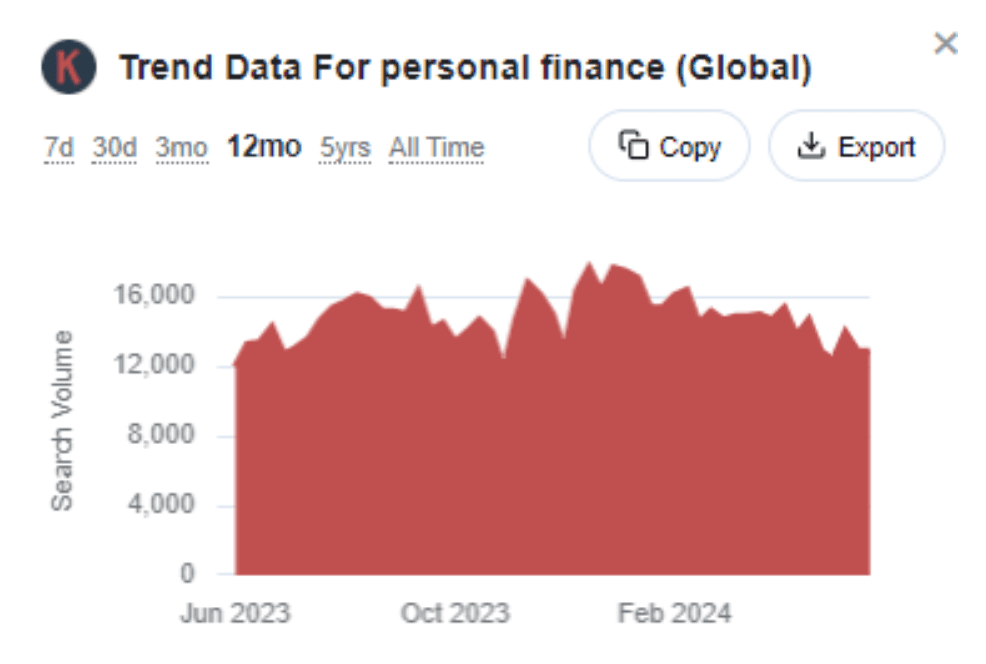
14. According to Keywords Everywhere data, one of the top food blogs, Pinch of Yum, gets 2,014,200 visitors per month, indicating the potential for high income in this niche. It also ranks for 109.8k keywords, which increases its chances of appearing in search engine results and driving traffic to the blog.
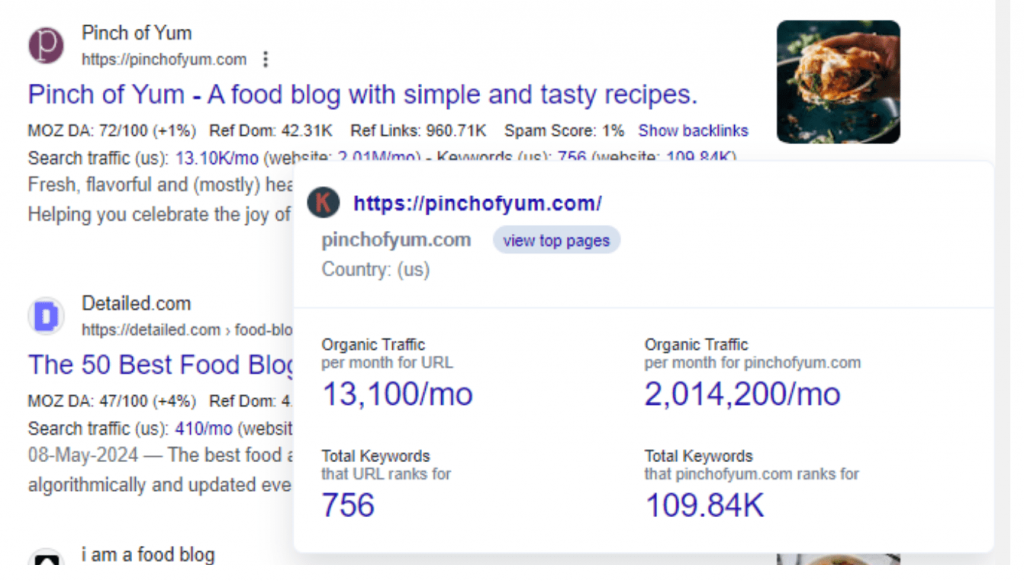
Blog Management and Post Creation Stats
As mentioned earlier, the way bloggers post today is a bit different from how they did in the past. The average length and time taken to write blog posts has increased in the past decade.
These statistics provide a glimpse into the new trends in blog creation and management.
15. The length of a blog post and the organic traffic coming to it are moderately correlated but only up to 2,000 words. As a blog post crosses the 2,000-word threshold, traffic starts to decrease.
16. Most people are able to read about 250 words per minute. Based on this data, 7-minute blog posts should have 1,750 words.
17. On average, a blog post is 1,427 words long. Today’s blog posts have 77% more words compared to the ones 10 years ago.
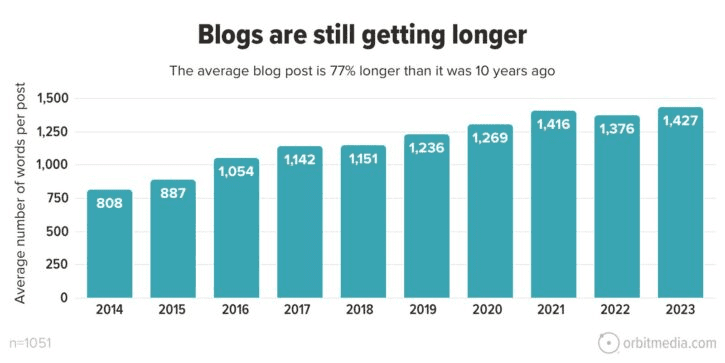
Source
18. Only 3% of the blogs worldwide post articles longer than 3,000 words regularly.
19. On average, a top-performing blog post is 1,152 words long. On the other hand, low-performing blog posts are around 668 words long.
20. It takes bloggers 3 hours and 51 minutes to write a blog post. That’s much longer than the 2 hours and 35 minutes that it took in 2015. However, the longest time bloggers took to write blogs was in 2022, when the average was 4 hours and 10 minutes.
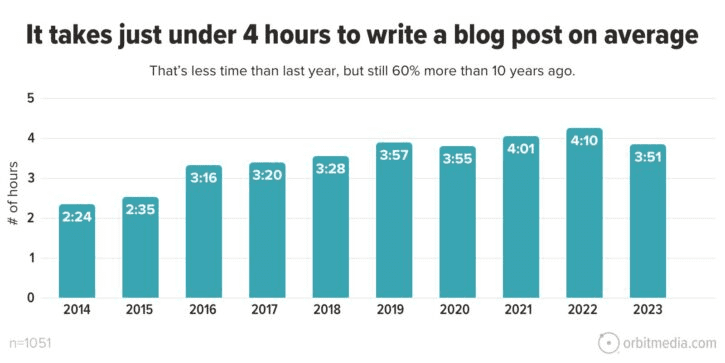
Source
21. Spending more time on writing blog posts pays off since 35% of bloggers say that they see strong results with their content when they spend more than 6 hours on it. Similarly, 29% of bloggers who spend 4 to 6 hours on a blog post report strong results.
22. Listicles are the most common type of content created by both high and low-income bloggers. It is followed by how-to guides, case studies, opinion pieces, infographics, and original research.
Most Common Blogging Challenges Stats
Running a blog comes with a host of challenges. As an aspiring blogger, it’s important to be aware of these challenges and how they may affect your content creation. Here are some blogging stats on the most common challenges.
23. When a blog reads for more than 7 minutes, its engagement drops.
24. According to SiegeMedia data, the two biggest challenges for content marketers are measuring return on investment (ROI) and generating leads.
25. 75% of people prefer to read articles shorter than 1,000 words, and only 5% want to read articles longer than 2,000 words.
26. 49% of bloggers struggle to get readers to engage with their content, while 19% have trouble attracting visitors through email marketing challenges.
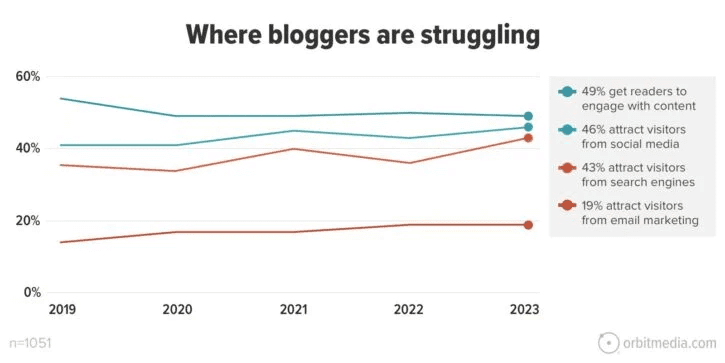
Source
27. 39% of readers find excessive wordiness and bad writing to be the most annoying thing about brand content.
Blog Content Type Stats
Blogs are no longer simply blocks of text. They have evolved to include a variety of content types, from videos and infographics to podcasts and webinars. Here are some blogging statistics on the popularity of different types of blog content.
28. 76% of bloggers post how-to articles, 55% post listicles, 47% post news and trends, and 47% post guides and eBooks.
29. Over 62% of content marketers create interactive content to boost their content marketing efforts.
30. 5% of all top-performing content posts contain data studies.
31. 24% of bloggers use video in their blog content since it is a highly engaging format.
32. 92% of bloggers put images in their content, while 50% include statistics.
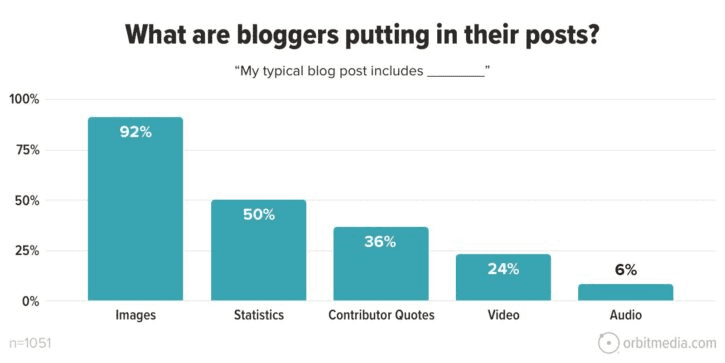
Source
33. 34% of bloggers say that adding video to their content drives strong results. On the other hand, 27% of bloggers who add images say they see strong results.
Blogging SEO Stats
Blogging SEO means optimizing your blog posts so that they rank higher on search engines like Google. With the ever-growing competition in the blogging world, SEO is an integral part of successful blogging. These statistics will provide more insights.
34. The top-ranking page on Google gets the most search traffic only half of the time.
35. Bloggers who take keywords into consideration are likely to be successful. 39% of bloggers who conduct keyword research for all their posts say that they see strong results. On the other hand, only 19% of bloggers who never use keyword research say that they see strong results with their blogs.
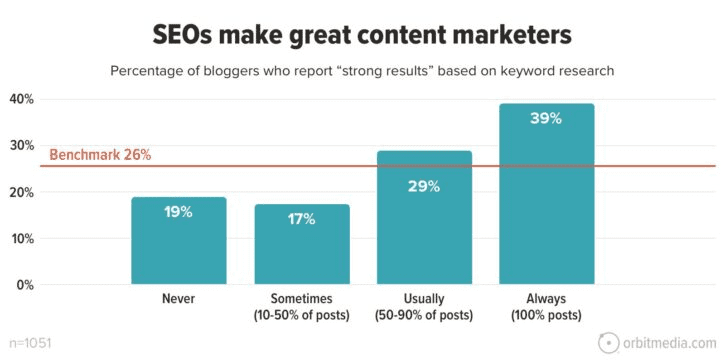
Source
36. On average, the top-ranking page also ranks for about 1,000 other relevant keywords. For example, Keywords Everywhere data shows that the top result for ”digital marketing” ranks for more than 800 keywords.
37. Nearly 74% of bloggers update old content, which is a good way to repurpose and optimize old blog posts for better SEO ranking.
Guest Blogging Stats
Guest blogging is an effective way to reach new audiences, build backlinks, and establish authority in your niche. Here are some statistics related to guest blogging.
38. 87% of bloggers create their own guest post ideas, while only 52% actually write them.
39. On average, it costs $77.8 to publish a paid guest post.
40. 60% of bloggers report writing 1 to 5 guest posts per month.
41. Nearly 65% of bloggers use guest blogging as a link-building tactic, making it the most popular strategy for building links.
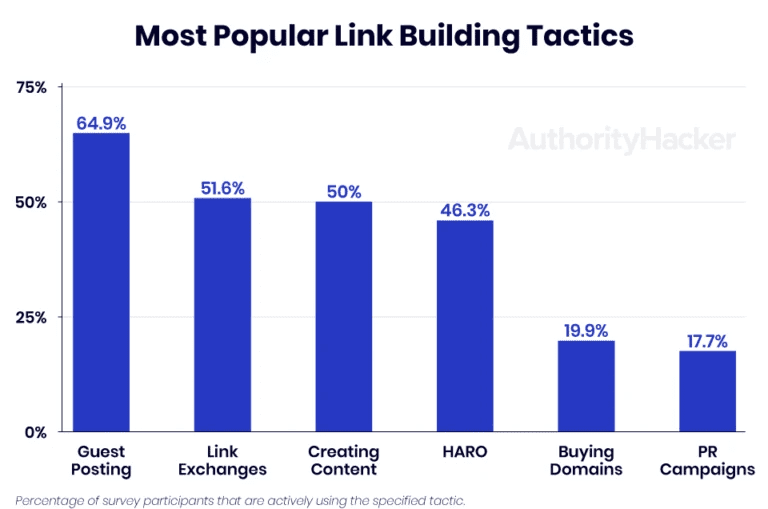
Source
AI in Blogging Stats
It’s no surprise that AI has made its way into the world of blogging. From content creation to SEO optimization, artificial intelligence is revolutionizing the way bloggers work. Here are some insightful statistics.
42. Marketers save 3+ hours per piece of content when they use AI for content creation.
43. 89% of marketers say that generative AI improves the quality of their content.
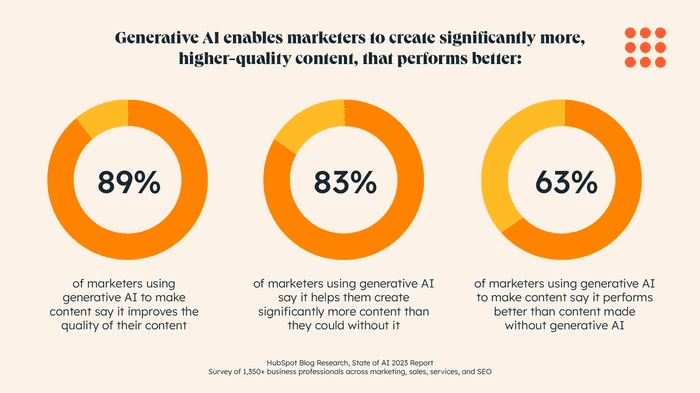
Source
44. 21% of bloggers write their first drafts using AI, while 29% use it to write headlines.
45. Using AI doesn’t make bloggers more successful than their peers who do not use AI.
46. 33% of content marketers use AI to create outlines for their content, while 25% use it to write a few paragraphs, which they expand on later.
Conclusion
Summing up, blogging is just as influential today as it was years ago. The constantly evolving landscape of blogging, with new trends emerging every day, shows that this medium is here to stay.
From guest blogging to using AI for content creation, bloggers are always looking for innovative ways to stay relevant. With the help of these blogging stats, you can understand the impact of blogging and how it continues to shape the digital world.
Whether you’re a seasoned blogger or just starting out, keep these numbers in mind as you navigate your way through the world of blogging.


